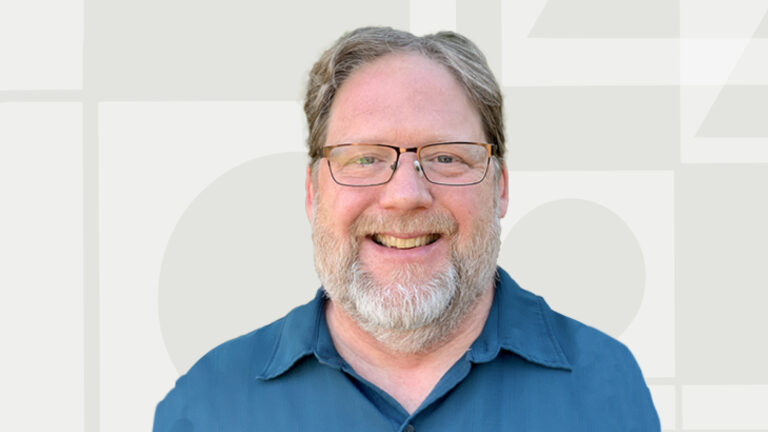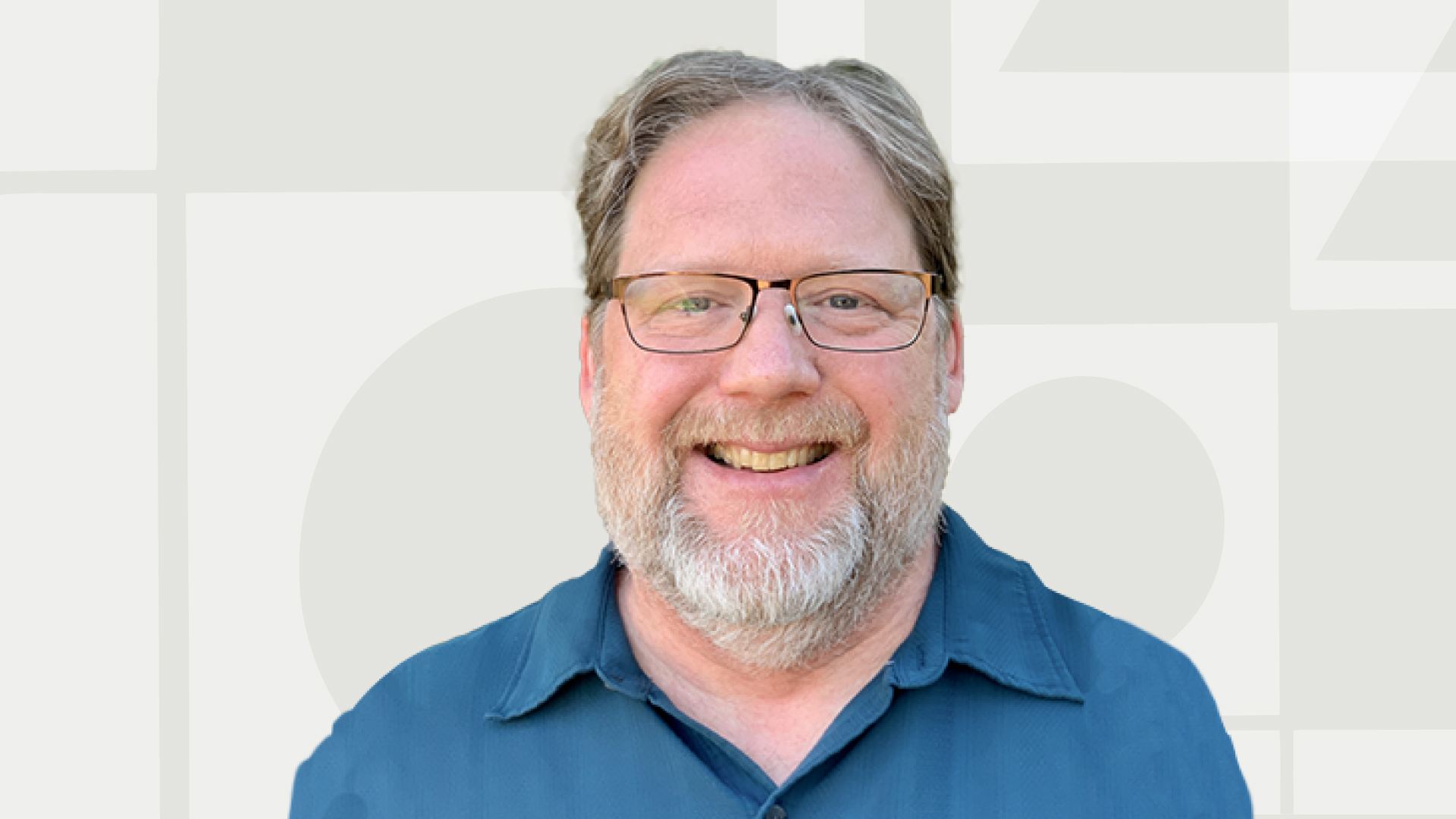
Bringing IT under an agile umbrella
“I’ve been working as a software engineer for over 30 years, and I still love to write software.”
Many award-winning SRI programs have benefitted from Wingerden’s deep technical knowledge and IT management skills.
SRI International has more than its fair share of talented people. One such outstanding talent is Ken Wingerden, Principal Solutions Architect at the Center for Software Engineering, Integrated Systems and Solutions. Over the years, many award-winning SRI programs have benefitted from his deep technical knowledge and IT management skills. Here is a story of an agile IT mind and SRI tech superstar.
From military tech to the private sector and back again
With a degree in computer science and mathematics from Santa Clara University in California, Wingerden began his career working in software engineering at TRW Inc. as a member of the team developing the United States Army’s GuardRail Common Sensor program. He speaks fondly of his early career when he would test for bugs and participate in mock tactical surveillance missions. Although his early career involved military standards, he developed portable skills that allowed him to transfer out of government into the private sector.
Wingerden took on many challenges in the private sector, including engineering roles at Quantum Inc. and TransUnion. During his time at TransUnion, Wingerden honed his skills in large-scale consumer systems by being involved in the development of an innovation in credit reporting now used by millions of customers per month. Understanding the dynamics and scalability required to meet the demands of consumers has given him the skills to handle any IT project, no matter the size.
The advent and evolution of cloud computing have coincided with his career. His previous foray into mass-scale consumer systems primed his interest in the emerging discipline of DevOps, which is based on the automated provisioning of cloud infrastructure and integration with vital software service providers to provide customized, affordable, scalable, reliable and secure solutions.
Around 2010 a friend suggested he look at SRI International for his next challenge. Wingerden’s early experience with military technology was about to come full circle with SRI.
The cohesive umbrella of SRI
Wingerden began his life at SRI as a Senior Software Engineer within the Center for Software Engineering. He attributes his success in software development to certain key traits, “in this career, things are constantly changing, and certain attributes make good software engineers; I believe I have these traits in abundance, in the sense that I love to learn, I love change, and I thrive on change and adaptation.”
His role at SRI has changed over the years as the institute’s needs have evolved. While the original primary purpose of the Center for Software Engineering at SRI was to provide software engineering expertise across the institute, this has changed over time. There is now a broader need above and beyond the provision of software engineering expertise. As a Principal Solutions Architect, Wingerden must understand all the complexities across the entire lifecycle of a project. He must also have practical experience in delivering an engineering solution that satisfies a matrix of customer needs: cost-effectiveness, regulatory compliance, information security requirements, etc., within the SRI infrastructure.
He explained how SRI Inernational must become more of an ecosystem bringing all disciplines together under a “cohesive umbrella”:
“…we rely on individuals in each unit at SRI to learn from one another on how to best utilize SRI technology. So, if there’s a marketing component, you bring in a marketing person; if there’s a legal component, you bring in a legal person, contracts, etc. Unfortunately, many projects are left to their own devices, resulting in frustration and silos. To optimize effectiveness, we must be collaborative.”
A collaborative and cohesive umbrella is Wingerden’s mission at SRI. He regularly communicates across divisions to enable this. In doing so, he sometimes finds common solutions to problems across multiple projects at SRI.
The joy of developing software
“Great professional satisfaction comes from delivering a solution that the customer is overjoyed with.”
Wingerden has vast experience working across many industries, from military to private ventures. As he has moved through his career, the principle of agile development and optimization across the software development life cycle (SDLC) has become increasingly important. He has been able to bring this experience of agile thinking to SRI. Wingerden is a systems thinker; he works outwards from the customer requirements to build for customer needs. He explains:
“I love to start from the beginning, talking with the customer; I love understanding their problems. I have built a repertoire of techniques that I can use to elicit requirements. And I have developed a process to tease out further requirements to ensure we’re building exactly what the customer wants. Agile software development processes that optimize the software development life cycle are something that the industry has been embracing for a long time. I have brought the principles of agile with me to SRI.”
This agile approach is bringing important impetus and focus to several key SRI projects that Wingerden is involved in, including:
- Quantum Economic Development Consortium (QED-C): a platform to bring quantum computing vendors together as an ecosystem.
- National Training and Education Resource (NTER): creating educational content on carpentry skills, etc., to facilitate poorer neighborhoods to weatherize homes for energy efficiency.
- Desert Owl: airborne intelligence, surveillance and reconnaissance system to conduct measurement and signature intelligence (MASINT) and imagery intelligence (IMINT) missions in near all-weather conditions.
- Pervasive Learning System (PERLS): a personal assistant learning application designed to support adult self-learners.
- Contraceptive Infertility Target Database (CITDBase): a health database that provides access to a list of human contraceptive targets for investigators working in the field.
- Nomura-SRI Innovation Center (NSIC): connects Japanese corporations with Silicon Valley’s pioneering startups and R&D labs. The center also provides experiential education on technology trends, emerging business and financial models, innovation best practices, go-to-market strategies, and technology transfer frameworks.
A final word
Wingerden has built world-class project teams to deliver world-class solutions. He likes to “foster a space to get an answer through encouragement.” A final word from Wingerden explains how engineering teams need an all-round set of skills to get the best out of a project:
“One thing I appreciate is that even though engineering and technology have advanced, engineering projects still require much human activity. So, managing a team of people requires many soft skills to ensure an engineering project succeeds. I enjoy that aspect; I love working with teams instead of alone. And when you can get a team to perform well and enjoy what they’re doing, that’s a huge win, and the results are even better than you would’ve expected.”



